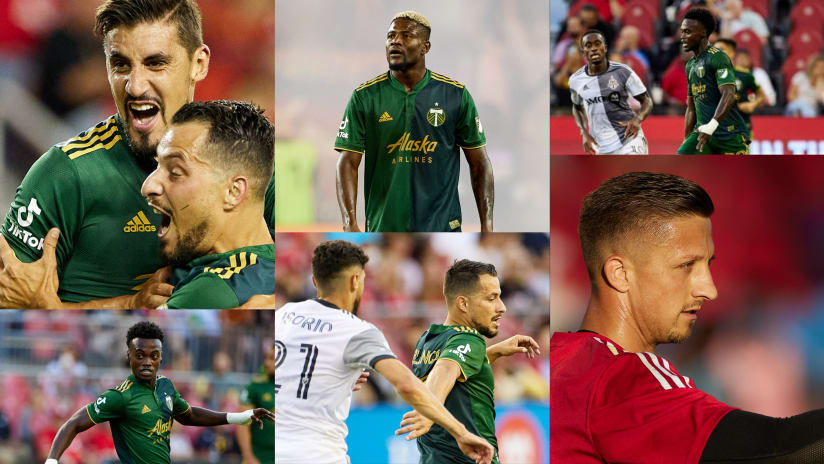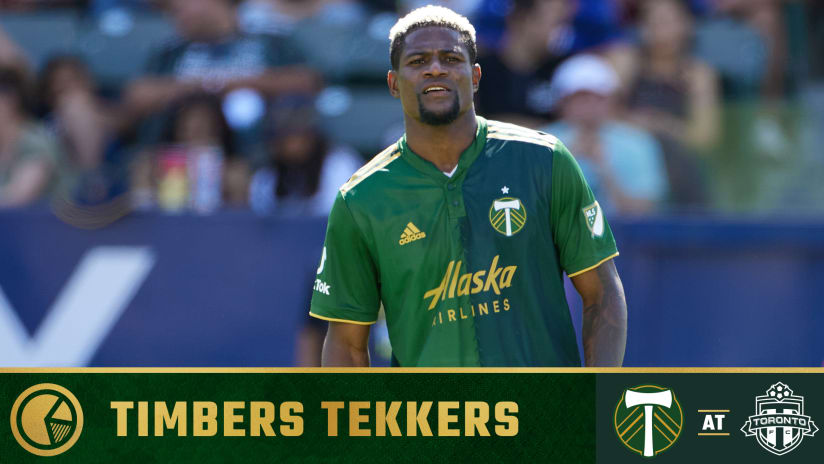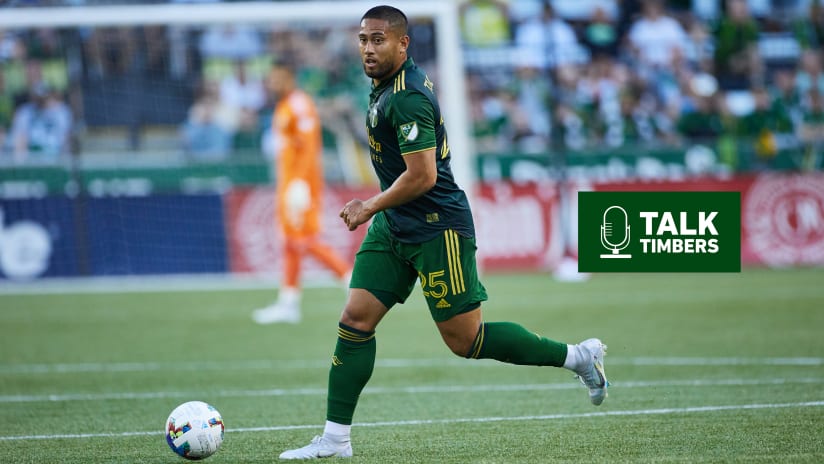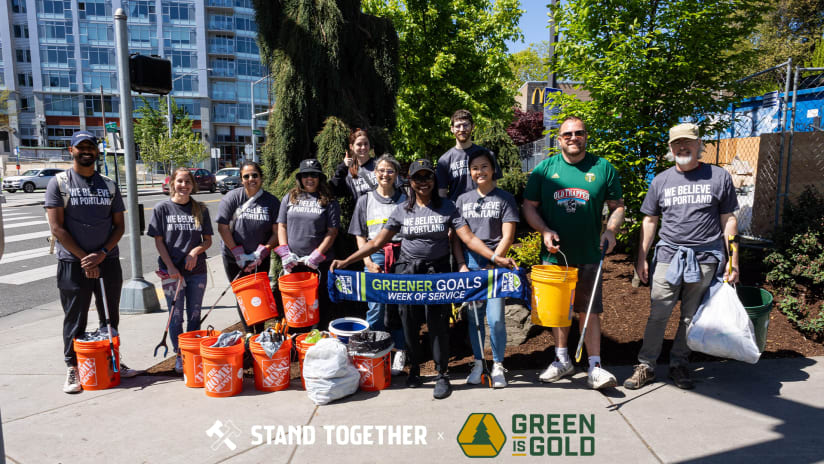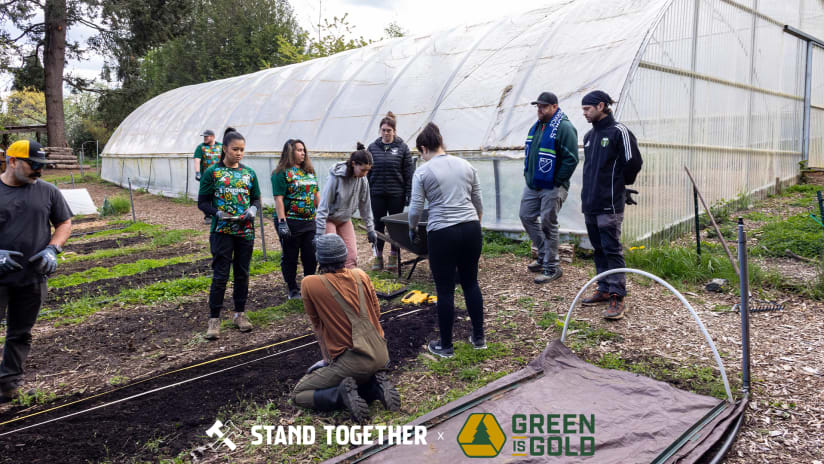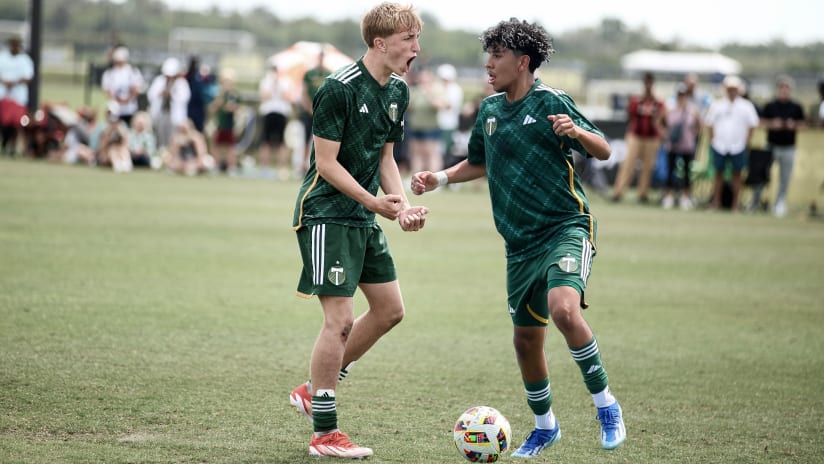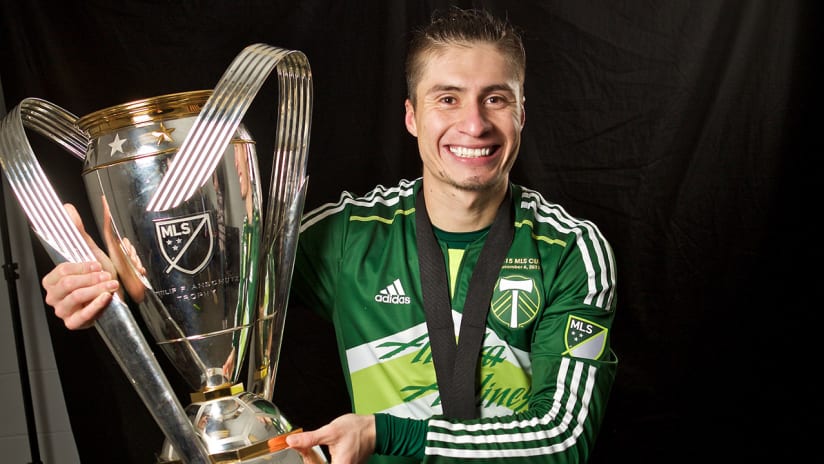For those noting differences between the two coaches’ calls, the backdrops would have been enough.
Last Friday, Portland Timbers head coach Giovanni Savarese sat in front of a bank of windows during his video conference call – the first time somebody from the Timbers and Thorns’ organization had spoken to the media since MLS and the NWSL began their COVID-19 precautions. The sunlight was faint, but it was there. No other lights were needed. We were only days into our new world.
Today, it was Thorns head coach Mark Parsons’ turn. His background was far more practical. A beige wall with no decoration reflected what felt like the room’s fluorescent light, as if central casting had cast the first room that auditioned for “home office.”
Seven days had passed between the coaches’ media sessions, but the messages from Parsons and Savarese were largely the same. Soccer wasn’t important at the moment, but in truth, sport rarely is. That doesn’t mean it serves no purpose. And that doesn’t mean we don’t want it to return.
“Yesterday, I started watching our first week of training back,” Parsons began, when asked how much he was missing his job. At Providence Park, each of his team’s practices are captured by the stadium’s cameras. Highlights from last year’s sessions have been popping up on Parsons’ social media.
“I just let it roll,” he continued. “It was in the evening when I had some personal time. I needed that. I’m missing [the field] dearly … I needed to escape to that place for an hour or two.”
How long that escape will be needed remains unclear, which means for the immediate future, Parsons occupies a similar, dual existence as Savarese, as well as every other coach in the National Women’s Soccer League and Major League Soccer. On one path, coaches need to deal with the reality of the now, which means prioritizing health, safety and precautions.
“I feel as though it’s a responsibility as players and staff to be strong as possible to be able to spread that message,” he said, “because of our influence, because of the impact that message can have. The reality is every single one of us has that responsibility.”
Communication, he explained, was key. At various points each season, he explained – “in the heat of battle” – Parsons says he falls into bad habits, responding to friends and family with single emojis when they reach out. “Not great communication,” he admitted. In the position he is now, he knows he has to do more.
“I’m in full flow of really communicating with people,” he said. “Me and my wife feel really privileged. I feel like the way the NWSL and [U.S. Soccer], Merritt [Paulson], Mike [Golub], Gavin [Wilkinson], how everyone communicates information to me as a head coach of this team, I feel privileged. I have been getting such clear and clean information at a time when no one knew what was going on. The information has been constant and updated.
“We feel like it’s a big responsibility to share that with friends and family. Constantly share the message without spreading fear or panic, but raising awareness.”
The other part of Parsons’ new, dual reality is one he can more readily control. It’s his job; or, what his job has morphed into over the past two weeks. The goal remains the same. He has to prepare his team, and although “for what” and “when” now surround that preparation, his job goes on.
“Right now, players are home and they are doing workouts very creatively,” he said. The NWSL currently has a moratorium on training sessions, leaving each staff to coach at a distance. “Our performance team has done a good job making sure it’s individual to each person and what their situation is. Are they in a living room? Do they have a small yard? Are they able to get to a safe place where they can have a run? There was one point where players were going to a local park to get their individual workouts in; of course, now that isn’t allowed.”
He talked about holding a team meeting via video conference, on Zoom. It was the first time the whole team had been together. Becky Sauerbrunn. Rocky Rodiguez. Sophia Smith, Morgan Weaver, and the other new players the team brought in this winter. It was the first time they’d interacted as a group, even if few of them were actually in the same place. Virtual counts as much as anything, for now.
“That [meeting] was to be able to communicate what the next two weeks would look like in regards to our team support and individual support,” he said. “The time we have now, unfortunately we have lots of time, we can take that and use that to develop our team. We’re having our team mandatory development meetings that started this week.”
There also one-on-ones, and homework. As part of each player’s tactical work, they’ll be reviewing film of another player – somebody they can learn from across world soccer. Every Thorn gets two games’ worth of actions. They’ll have to report back on what they saw.
“Whatever the player wanted to analyze, we wanted the player to drive it,” Parsons said, describing how the idea came about. “Our assistant coach Rich [Gunney] came up with the model to really understand their minds and how their minds see the game. Something that we probably wouldn’t have done this year if we weren’t in this situation because we are always so focused on their performance related to the Thorns and our team tactics …
“We want to make sure we balance this support, because there are bigger things going on right now than us preparing to play soccer. We are trying to get that balance because the individual is going to need mental and emotional support, not just for themselves, but for their friends and family. The mantra and the theme has been ‘together.’ So far, the team has been superb in embracing that.”
“So far” is the best anybody can do, for now. Though many are preparing for a prolonged time in isolation, next week’s world could be slightly different, just as the context around Parsons’ call was slightly different than Savarese’s call, a week ago.
For the near term, coaching at a distance will still be the norm. Maintaining perspective on soccer will be, too.
“We know this is bigger than football,” he said. “It’s all bigger than what we would like to be doing right now: seeing each other and being with each other. It’s bigger than that.
“At the same time, coming together on a gameday is often a distraction and a relief for all of us and for our fans from some other realities people face. We know the importance of us getting back together. The only way that’s possible is if we all pull together, we all stay together.”



